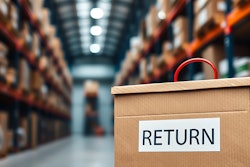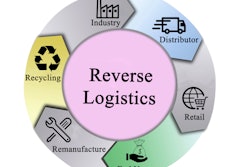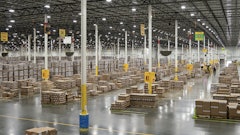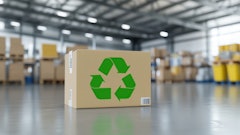
In the last few years, the rising penetration of internet services in developed and developing countries has been a major factor behind the rise of the e-commerce sector. Moreover, the wide range of consumer goods offered by these online retail companies has increased their popularity significantly.
Most of today’s online marketplaces provide customers an option to return their ordered products, thereby ensuring flexibility and improving consumer satisfaction. The “easy returns” policy offered by many e-commerce platforms is made possible by the concept of reverse logistics.
Reverse logistics refers to a component of supply chain management (SCM) that mainly deals with the upstream movement of goods and/or services. Also called reverse distribution, this stage involves taking the product back from the point of sale to the manufacturer or distributor for repair, recycling, or disposal. Apart from streamlining the return and exchange of goods, this component of SCM plays a significant role in establishing a robust recycling industry. Reverse distribution manages collecting, sorting, returning goods to the warehouse, recycling materials, and disposing of items that can't be repaired.
Growing emphasis on reverse distribution opening new avenues for growth in the industry
In the last few decades, the consumer goods sector has been heavily criticized for its significant contribution to environmental pollution. Moreover, the growing demand for different types of retail products has led to unchecked exploitation of natural resources, destroying several ecosystems around the world. In such a scenario, the importance of reverse logistics has escalated rapidly with many companies actively investing in new technologies and innovations to streamline their operations.
The advent of robotics has proven to be a leading contributor to the growth of the reverse logistics industry. Several e-commerce businesses have deployed autonomous mobile robots, automatic storage and retrieval systems, and unmanned aerial vehicles to collect goods from point of sale and deliver to warehouses. Apart from improving operational efficiency and productivity, these solutions help improve the safety of the workers and reduce the errors associated with inventory management. Additionally, since most of the repetitive tasks are performed by these machines, these workers can be employed for more creative activities. Many enterprises are even deploying collaborative robots to work alongside humans to conduct quality checks and repair processes.
Along with this, e-commerce platforms are utilizing cloud-based technologies such as Infrastructure-as-a-Service (IaaS) to handle multiple return requests seamlessly. IaaS enables businesses to scale their operations easily, thus helping them expand their operations. Moreover, the expenses associated with the implementation of these cloud technologies are quite low. Ultimately this brings down the cost of running a business, thereby increasing the company’s profitability. Also, cloud-based infrastructure allows online retailers to remotely monitor inventory levels and other logistics-related parameters in real-time.
The growing importance of recommerce and circular economy
The reverse logistics industry accounted for $630.9 billion in 2022, according to a reverse logistics market research report published by Allied Market Research. The study further adds that the sector is expected to gather a revenue of $947.7 billion by 2032, growing at a CAGR of 4.3% during 2023-2032. The increasing emphasis of several major e-commerce companies on the circular economy is one of the primary reasons behind the expansion of the landscape. As mentioned earlier, various enterprises have started transitioning toward business practices that have minimal negative impact on the global environment.
The circular economy is a model of manufacturing and consumption wherein existing materials or products are shared, leased, reused, repaired, and/or recycled to optimize natural resource usage. Many fashion brands, for instance, have launched initiatives that allow customers to return their used garments to their retail outlets. These used clothing items are then recycled to create new trendy apparel, thereby reducing the carbon footprint of the textile manufacturing sector. Similarly, consumer electronics businesses are investing in recommerce models which involve the resale of refurbished and repurposed products.
Increasing investments by leading players in reverse logistics
Over the past few years, many multinational conglomerates have invested heavily in upgrading their reverse logistics capabilities. On the other hand, certain businesses have established alliances to expand their footprint in the industry. As a result, product launches are expected to significantly accelerate the industry's growth rate in the coming period.
In essence, the increasing awareness regarding environmental sustainability has played a huge role in the growth of the reverse logistics sector. The transition toward circular economy and recommerce has created favorable conditions for the expansion of the landscape. Moreover, the integration of robotics and cloud computing is predicted to bring in numerous investment opportunities across the landscape.




![Pros To Know 2026 [color]](https://img.sdcexec.com/mindful/acbm/workspaces/default/uploads/2025/08/prostoknow-2026-color.mduFvhpgMk.png?auto=format%2Ccompress&bg=fff&fill-color=fff&fit=fill&h=100&q=70&w=100)







![Pros To Know 2026 [color]](https://img.sdcexec.com/mindful/acbm/workspaces/default/uploads/2025/08/prostoknow-2026-color.mduFvhpgMk.png?ar=16%3A9&auto=format%2Ccompress&bg=fff&fill-color=fff&fit=fill&h=135&q=70&w=240)







